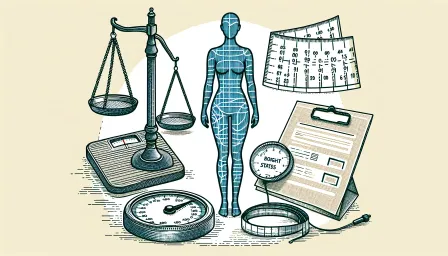The Impact of Waist-to-Hip Ratio on Heart Disease Risk

Explore how waist-to-hip ratio influences heart disease risk. Learn the importance, implications, and preventive measures related to waist-to-hip ratio and heart health.
The relationship between body fat distribution and cardiovascular health has been a topic of significant research and debate. Among various metrics used to evaluate body fat, the waist-to-hip ratio (WHR) has emerged as a critical indicator of heart disease risk. Understanding how WHR influences cardiovascular health can guide preventive measures and improve overall well-being. This article delves into the significance of waist-to-hip ratio in assessing heart disease risk, providing a comprehensive overview of its implications, and offering actionable insights for maintaining optimal heart health.
What is Waist-to-Hip Ratio?
The waist-to-hip ratio is a simple anthropometric measurement that compares the circumference of the waist to that of the hips. It is calculated by dividing the waist measurement by the hip measurement. For example, if a person’s waist circumference is 30 inches and their hip circumference is 40 inches, the WHR would be 0.75.
This ratio serves as an indicator of fat distribution in the body. A higher WHR suggests more abdominal fat relative to the hips, while a lower WHR indicates more fat stored around the hips and thighs.
Waist-to-Hip Ratio and Heart Disease: The Connection
Research has consistently shown that a higher waist-to-hip ratio is associated with an increased risk of cardiovascular diseases (CVD). This is because fat accumulation in the abdominal area, also known as visceral fat, is metabolically active and can lead to adverse health effects such as:
- Inflammation: Visceral fat releases pro-inflammatory cytokines, which can damage blood vessels and contribute to atherosclerosis.
- Insulin Resistance: Increased abdominal fat is linked to insulin resistance, a predisposing factor for type 2 diabetes, which in turn raises heart disease risk.
- Elevated Blood Pressure: Abdominal obesity is often associated with hypertension, a major risk factor for heart attacks and strokes.
- Dyslipidemia: High waist-to-hip ratios can lead to abnormal lipid profiles, including higher triglycerides and lower HDL cholesterol levels.
Assessing Your Waist-to-Hip Ratio
Proper Measurement Techniques
To accurately measure your waist-to-hip ratio, follow these steps:
- Measure the Waist: Place a measuring tape around the narrowest part of your waist, usually just above the belly button. Ensure the tape is snug but not too tight.
- Measure the Hips: Place the measuring tape around the widest part of your hips and buttocks.
- Calculate the Ratio: Divide the waist measurement by the hip measurement to obtain your WHR.
Interpreting Waist-to-Hip Ratio Results
The World Health Organization (WHO) provides guidelines for interpreting WHR values:
- For Men: A WHR greater than 0.90 indicates a higher risk of heart disease.
- For Women: A WHR greater than 0.85 indicates a higher risk of heart disease.
These thresholds suggest that individuals with WHR values above the recommended limits should be particularly mindful of their cardiovascular health.
Impact of Waist-to-Hip Ratio on Different Populations
Gender Differences
Men and women tend to store fat differently, which affects their WHR. Men are more likely to accumulate visceral fat in the abdominal area, while women typically store fat around the hips and thighs. This difference underscores why WHR thresholds for heart disease risk vary between genders.
Age-Related Considerations
As individuals age, body fat distribution often changes. Postmenopausal women, for instance, may experience an increase in abdominal fat, elevating their WHR and subsequent heart disease risk. Therefore, regular monitoring of WHR can be particularly important for older adults.
Ethnic Variations
Different ethnic groups may have varying distributions of body fat, which can influence WHR and associated health risks. For example, individuals of South Asian descent are more likely to develop abdominal obesity and thus may have a higher prevalence of cardiovascular diseases.
Strategies to Improve Waist-to-Hip Ratio and Reduce Heart Disease Risk
Balanced Diet
Adopting a healthy and balanced diet can help reduce abdominal fat and improve WHR. Focus on consuming:
- Whole grains, fruits, and vegetables
- Lean proteins and healthy fats
- Reduced intake of sugar and processed foods
- Ample hydration
Regular Physical Activity
Exercise is crucial for managing body weight and reducing abdominal fat. Incorporate a mix of:
- Aerobic exercises (e.g., walking, running, cycling)
- Strength training to build muscle mass
- Core-focused workouts (e.g., yoga, Pilates)
Healthy Lifestyle Habits
In addition to diet and exercise, other lifestyle choices can significantly impact WHR and heart health:
- Get adequate sleep: Aim for 7-9 hours per night.
- Manage stress: Practice relaxation techniques such as meditation or deep breathing exercises.
- Avoid smoking and limit alcohol intake: Both can contribute to unhealthy fat distribution.
Conclusion
Understanding the impact of waist-to-hip ratio and heart disease is essential for promoting cardiovascular health. By regularly assessing and managing your WHR through balanced diet, physical activity, and healthy lifestyle habits, you can significantly reduce your risk of heart disease and enhance your overall well-being. Take proactive steps today to maintain an optimal waist-to-hip ratio and prioritize your heart health for a healthier future.



























